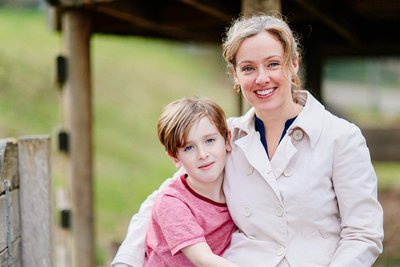
It’s soup day on a Friday at Eugene Waldorf School (EWS). In the corner of the multi-age kindergarten classroom, a group of students sits at a table helping their teacher make soup from the vegetables brought from home. The room is fully set up for preparation for the meal. There are pots and pans stacked on a shelf, and cutting utensils for the children to use for the vegetables.
“It is an education of doing, and that is not only rich with opportunity to learn social skills, but it’s also the way to have them most engaged,” says Valerie Perrott, the public relations and enrollment coordinator at the school.
EWS, a not-for-profit 501(c)(3) independent private school serving kids preschool through eighth grade, was founded 36 years ago and today serves 175 students, Perrott says. The school offers smaller class sizes than most public schools, with a 16-to-1 average student-teacher ratio in elementary classes.
Waldorf education was established in 1919 by Rudolf Steiner and it exists in varying formats in more than 900 Waldorf schools worldwide in 83 countries.
Two focuses of Waldorf education, according to Association of Waldorf Schools of North America’s website, are meeting students where they are developmentally and learning through experience.
At Eugene Waldorf School, Perrott says, “every lesson we start with something already from their understanding and then we grow from there. So whether it’s science or math or reading and writing, everything we start with is something they already know about.”
In a third grade classroom, EWS students gather in a circle around a box of unwoven brown and black wool, asking questions and making observations about what they see. This is just one example, Perrott says, of how EWS students learn about the world through information they already know.
Parent Molly Mair says she appreciates the school for its holistic approach. Mair is a broker and social media specialist at Equinox Real Estate in Eugene, as well as a Eugene Waldorf parent whose son, second-grader Hollis Yates, transferred from a local 4J school to EWS this winter term.
“I think he’s trying things that weren’t asked of him before, so he’s being challenged in a way that’s forcing him to rely on himself. Like with the drawing, artistically he’s not very advanced, so that’s a challenge for him,” Mair says.
Walking through the classrooms, one can see that art plays a significant role in the foundation of Waldorf education. This is exemplified in the school’s classrooms, where there are colorful paintings of boats, a sketch of Martin Luther King Jr. and a chalk drawing depicting the science of weather.
Though there is an obvious inclusion and incorporation of art in Eugene Waldorf education, EWS eighth-grade teacher Jeannie Schwanekamp says it’s a misconception that EWS emphasizes art over other subjects.
“You don’t need to be an artist to be here,” Perrott says. “We don’t teach art so children grow up to be artists, per se, any more than we teach math for children to grow to be mathematicians. It’s what it gives them in their life. That’s why we teach art.”
Another foundation to Eugene Waldorf education, which parent Mair says she appreciates, is having the same teacher for all eight years, with the exception of students who transfer into the school.
Schwanekamp, who has taught at EWS for 11 years, says having the opportunity to work with kids long-term paints a more detailed picture of who her students are.
“You get to see that they are not static,” Schwanekamp says. “You also get to see how they develop, and it is incredibly hope-generating to go, ‘Wow, this is where you started, and the thing that seemed so insurmountable in third grade is gone.’ You get to see exactly how that happens.”
For more information, visit eugenewaldorfschool.org.
Help keep truly independent
local news alive!
As the year wraps up, we’re reminded — again — that independent local news doesn’t just magically appear. It exists because this community insists on having a watchdog, a megaphone and occasionally a thorn in someone’s side.
Over the past two years, you helped us regroup and get back to doing what we do best: reporting with heart, backbone, and zero corporate nonsense.
If you want to keep Eugene Weekly free and fearless… this is the moment.